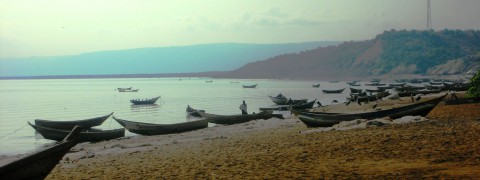
Modelled after eleQtra’s multi-sector rural infrastructure development approach established by the Kalangala Infrastructure Project,
The Lake Albert Infrastructure Project (“LAIP”) involves the development, finance and operation of (i) a gas-fired power plant, approximately 52MW in size, powered principally by excess associated gas (EAG) produced as a by‐product of oil production in the region and (ii) other rural utility services (water; power) for local communities.
By injecting needed wholesale power into the national grid through monetization of oil production by‐products, LAIP adds capacity to the national grid, prevents wasteful and harmful flaring of associated gas, and serves as a commercial anchor for the Project’s provision of rural utilities. The conversion of EAG into electric energy poses unique challenges in terms of reliability, cost and ensuring the non-interruption of oil production. The Project is being developed with dual primary objectives, namely to deliver a robust and secure long-term solution to the productive utilization of EAG through electric energy generation to ensure that oil production is not interrupted; the reliable and sustainable provision of thermal power to the national grid at a competitive least-cost wholesale electricity tariff.
Primary Economic Benefits
- Monetization of EAG – Allows EAG derived from oil production to be monetized through conversion to electricity for supply to local communities and the national grid. Rural populations and commercial entities will have first-time access to gird based electricity supply thereby augmenting commercial trading activity, improving efficiency and education. Local communities will be provided with clean water, contributing to the improvement of local health conditions and decreasing water collection time.
- Energy Diversification – The Project will help mitigate hydropower vulnerabilities such as climatic fluctuations, international treaties limiting water usage, and changes to water flow in the Nile by providing an alternative energy source.
- Addresses Uncertain Demand – Project technology has quick start capabilities to meet varying and peak load requirements on an on-demand basis.
Primary Social Benefits
- By utilizing hydro-carbon resources that would otherwise be wasted, the Project will contribute to the reduction of carbon production by 122,000 tons CO2/year (compared to future power generation alternatives plus emissions from the flared gas)
- The project will enhance local standard of living via such factors as improved productivity, health management, fishing techniques and commerce. Moreover, education, information access, and health and safety services will also benefit local livelihoods. The Project is expected to provide power for the equivalent of improved services to 5.5 million Ugandans or full power services to 2.0 million Ugandans, allowing individuals and businesses to rely on electricity
It is expected the project will:
- provide at least 70,000 people with first time access to electricity
- create 370 short term employment opportunities
- create 160 long term employment opportunities
Project Structure
- The Project is being structured as an Independent Power Project (IPP) with a long term power purchase agreement between LAIS and the Uganda Electricity Transmission Company Ltd (UETCL).
- The Project will procure excess associated gas from the Uganda National Oil Company or directly from the oil companies and any excess HFO from the refinery being developed in nearby Kaabale.
- The project costs will be funded through debt and equity using a typical project finance structure similar to what has been successfully implemented by eleQtra on the Kalangala Infrastructure Project.
Project Relevance
- By extending Lake Albert’s imminent oil industry related infrastructure developments to serve the local communities, the project will demonstrate how new industrial projects in Sub Saharan Africa can integrate with local communities through early, strategic, multi-faceted planning.
Project Status
- The project is currently carrying out feasibility studies under a permit issued by the Electricity Regulatory Authority and a Memorandum of Understanding between the Ministry of Energy and Mineral Development and LAIS regarding the utilization of EAG.
Lake Albert Infrastructure Services
Uganda
Sponsoring government ministries
Ministry of Energy and Mineral Development
Approximate scope of project
Cost: Cost: $100 Million USD
Time: Construction Commencement 2017
Developer In Charge
Gad Cohen


